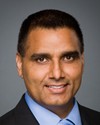Thank you very much.
It's a pleasure to be here.
I was here on February 18 before the Senate committee. I'm glad that you've asked me back to be able to talk today.
I was going to start off by referencing where the chair of the Senate committee, Senator Andrychuk, left off with her last question to us at that time. I'm paraphrasing this: are there capital hurdles holding Canadian SMEs back from exporting and are Canadian companies basically more risk adverse than U.S ones?
This question doesn't appear to be unique to Canada. I'm not sure if your committee is familiar with an article in The Wall Street Journal dating back earlier in March, which talks about Germany, “The Tiny Giant Hole in Germany's Economy”.
It went on to say that the number of small businesses starting up there was down about 25% over the last 10 years and by almost 47% over the last 20 years. Canada is not the only one that's competing in this market. We're not the only one that has these challenges.
In terms of getting the SMEs focused, our government, the Prime Minister, announced on March 18 that there would be two new funding programs over the next five years aimed at SMEs, one with $50 million for direct, non-repayble costs matched by recipient SMEs for trade fairs, etc. That is certainly welcome. The other is for the TCS. There's also $42 million over five years to help them add more commissioners and services.
I'd like to talk about a higher level of some of the structural and organizational imperatives that we're going to need if we are to reach the SMEs. I also chair and report to Minister Ed Fast for the SME advisory board that he has, so we have a bit more background on some of these things. First, the challenge of getting an additional 10,000 SMEs exporting in five years seems reasonable given that there are a million SMEs in Canada. When you start to reduce the million for people who are incorporated in their house, small store-fronts, and things of that nature, that base starts to shrink and the challenge becomes even larger.
Second, if you look at it a little differently, there are 40,000 SMEs that export today, and that's about 4%. Only 10,000 of those, or 1%, export beyond the U.S. If we're going to have an additional 10,000 exporting SMEs, that's equal to the sum of all the past efforts. When you start to look at the challenge it becomes quite large and you have to get at least 2,000 SMEs per year. That boils down to eight or nine per day exporting if you're going to meet this goal.
One thing I believe is that we need reach out to SMEs. There's has to be a two-way street to communicate. Most SMEs aren't aware of what's going on in Canada right now. In the minister's office, they talk about the TCS as being one of the better kept secrets. People don't understand the TCS and what it does. I'm not so sure we know where the SMEs are that are going to be export ready, or are already exporting to the U.S. and may take the next step and go to emerging markets.
The other part is the organizational structure that's in place today through the EDC, the BDC, the CCC, and the TCS. Those organizations are well aligned to support the previous model of free trade agreements and business as usual. In the last six or seven years, we've had an increase in the number of free trade agreements from four to over 30, and we now have an objective of increasing 10,000 SMEs over the next five years. That goal of moving up for an extra 10,000 SMEs is a tremendous objective, but it's one that's not going to come without our refocusing, in my opinion, on how these organizations are put together.
I have a couple of recommendations in that area. First, we have to create a better awareness, communication, and engagement strategy with SMEs. We're not sure if there's a database out there today that can segment our SMEs, the million that are in the base, and line those out to SMEs that are large enough to start exporting.
Second, there is a growing awareness about SMEs in the marketplace outside of Ottawa or government circles. SMEs are becoming very popular. There are major accounting and consulting firms engaged in SME practices. There are universities that are setting up SME chairs. A women's group in B.C. recently recruited 20 SMEs to go on the trade mission to South Korea. There is a major bank working with a Canadian digital media network and an entrepreneur who happens to be from Waterloo trying to run forums and educational institutions for SMEs to make them export-ready. This group is only reaching five to ten SMEs per session, and if you compare the uptake in new SMEs, there is a heck of a challenge to get to the 2,000 a year that we need.
The committee needs to be aware that the challenge is significant. It's a challenge that we haven't had before, and it comes about because of the very rapid change in the environment, going from four free trade agreements to over 30, and it comes with a goal set by government to increase the number of SMEs by 10,000. Those have disrupted the model that's out there.
When we look at how we're going to create this awareness and engage SMEs, I haven't heard a real strategy being articulated at this point. There are all kinds of initiatives from government, private, and institutional efforts, but we need to ramp those up and recognize that we've had some significant changes in this area.
One thing that would be great to have is a kind of a feeder network for synergies, where you take the initiatives from Ottawa and couple those with the initiatives outside of Ottawa, such as the private corporations, some of which are very large. Our biggest banks are funding SME initiatives, down to smaller, private enterprises that are getting involved in trying to make SMEs export-ready. If they are not export-ready, it's hard to export and do it successfully.
The second thing is to segment the appropriate markets and target them, just like you would if you were an automotive business or a retailer selling clothes. You need to understand what the base of a million is. You have to be able to target the ones that are most likely to be successful, where you get the best return on the money that's invested, whether it's through programs from the government or through programs that private enterprise is putting together.
The third thing is to recognize that the way the EDC, the BDC, the CCC, and the TCS are structured today, they are doing an excellent job of supporting businesses. They are in the export market, but what has changed for them is the fact that we're no longer working with 4 or 5 trade agreements—NAFTA being the most significant, and that's well in the past. We are now asking them to deal with 28 trade agreements, so there's a bit of what we call in the technology business a “disruptive change” that's taking place. When that is coupled with the new goal of doubling the number of companies that export to emerging markets, a significant challenge has been thrown in front of these organizations.
For example, about 80% of TCS resources are deployed in countries outside Canada and 20% at home. That is a great deployment. It's working very well, and I don't want there to be any sense of negativity in the statement I am making. However, when you have 80% offshore and 20% here, if you're going to try to create 10,000 new SMEs that are going to export, and you're going to create them here in Canada, somebody has to add the resources to get out and develop them. Whether it's government or the private sector, or a combination of both, you have to recognize that is needed. So perhaps the TCS needs to be given funding. If they're the organization that's recommended—and I think they are very well positioned to do this—they need to have some additional opportunities there.
Those are my opening comments, Mr. Chair.



